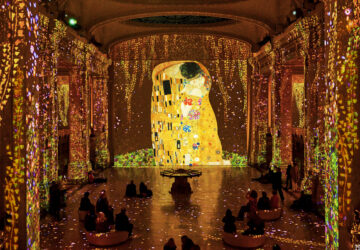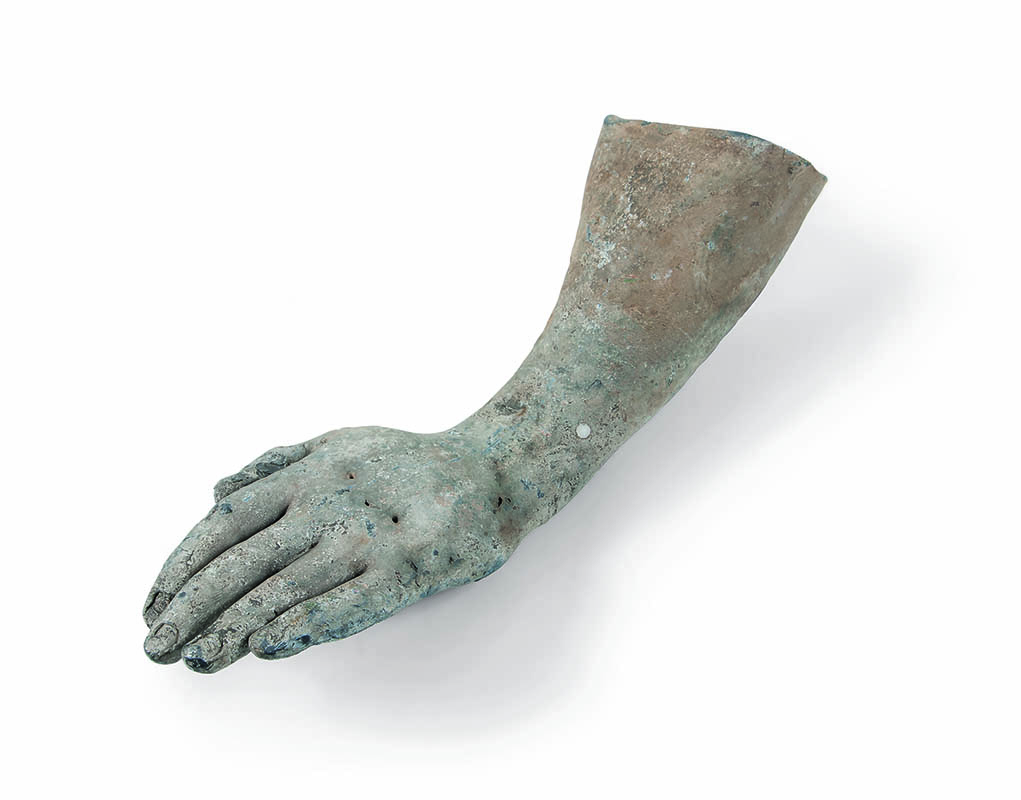On Independence Day this year, we explored where the known remnants of the King George III statue were. Most accounts simply state that the lead statue toppled at Bowling Green at the start of the American Revolution was melted down for ammunition. In fact, fragments of it were preserved and scattered across several countries, including a tail that’s at the New-York Historical Society and part of a mane in the Wilton Historical Society in Connecticut. King George’s head was saved but subsequently lost and not seen since 1777. Now, an exciting new piece is up for auction through Skinner auction house in Massachusetts: the lead hand, wrist, and forearm believed to be part of old King George.
The arm was found in Wilton, Connecticut where most of the remnants have been found. It is believed that local Tories, who were loyal to the crown, buried fragments they had stole from a shipment from New York City that stopped overnight in Wilton en route to Litchfield where they were to be melted.
 Image courtesy of Skinner, Inc. www.skinnerinc.com
Image courtesy of Skinner, Inc. www.skinnerinc.com
This particular arm fragment was not found until 1991, when a Wilton resident uncovered it in his garden on the former homestead of Job Burlock, a Tory who had shielded British agents. Burlock’s home was confiscated during the war and he had escaped across the sound to Long Island. When he returned to Wilton after the war, he was shot dead at his front door in 1783. In a fun Revolutionary war connection, it appears that Burlock’s widow, Hester, moved up to Canada (known then as the Provinces) where other loyalists fled with her new British captain husband, and it is suggested in this 1896 account that she was living in proximity to those that had helped facilitate the fateful meetings of Benedict Arnold and Major John Andre.
The provenance of this arm is rooted in more than an assumption based on geographical proximity to other fragments. Analysis was done by portable X-ray fluorescence (PXRF) and compared to two fragments of the statue that are in the New-York Historical Society collection. According to Skinner, “The data shows that this and the N-YHS fragments are a virtually perfect alloy match.” This arm fragment is going up for auction on November 1st at 10 AM in Marlborough, Massachusetts. It is expected to fetch between $15,000 and $25,000.
Interestingly enough, the fact that this is the left arm raises some questions about the historical record regarding some of the King George fragments. According to the Connecticut Star, the left arm was supposedly found in 1830 on the property of the Tory David Sloan. It was then bought by a Wilton resident who gifted it to a relative in Canada — at which point, the trace goes cold. But given the 1991 discovery of this fragment, perhaps that 1830 find was actually a right arm.
To hear more about the revolutionary destruction of King George III’s statue and the preceding colonial history of New York City join our upcoming tour of the Remnants of Dutch New Amsterdam! On this tour you’ll see the site where the statue once stood and get to literally touch a remnant of that time, the Bowling Green fence which still bears the tangible scars of revolutionists chopping off the crowns which once stood atop each fence post.
Tour of The Remnants of Dutch New Amsterdam
Next, check out where other fragments of King George III are located, discover the secrets of Bowling Green Park, and find out how New Yorkers celebrated the departure of British troops when the Revolution was over!






